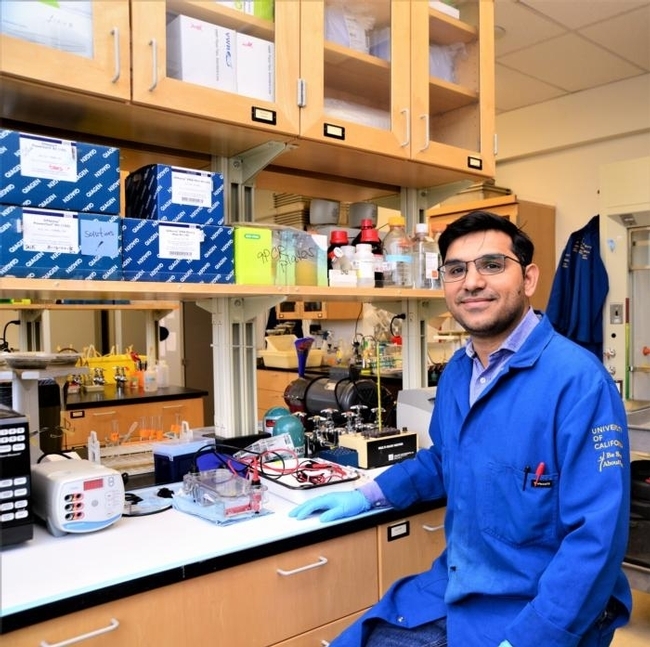
And UC Davis plant nematologist Shahid Siddique, formerly with the University of Bonn, is at the heart of it.
He led a 10-member international team in discovering the role of a plant's endodermal barrier system in defending against plant-parasitic nematodes.The Plant Journal published the research, Root Endodermal Barrier System Contributes to Defence against Plant-Parasitic Cyst and Root-Knot Nematodes, in its July 19th edition.
Fast forward to October.
Research Highlight Editor Lysa Maron chose the work as the "research highlight" in her Oct. 14th article, “Breaking or Sneaking into the Fortress: the Root Endodermis is a Defence Wall Against Nematode Infection.” The journal also showcased the team's nematode image on the cover.
What's the significance of the research?
“We discovered that the integrity of the endodermis—a specialized cell layer that surrounds the vascular system and helps regulate the flow of water, ions and minerals--is important to restrict nematode infection,” said Siddique, an assistant professor in the UC Davis Department of Nematology who joined the faculty in March after serving several years at the University of Bonn.
“We found that having defects in endodermis make it easier for parasites to reach the vascular cylinder and establish their feeding site. Although, this finding is a result of basic research, it opens new avenues to for breeding resistance against cyst nematodes in crops.”
Maron noted that “Roots are a truly amazing plant structure: they conquer the underground, form complex structures that anchor the plant, let water and nutrients in, but must not dry out. Roots store energy, send signals to the aboveground parts of the plant and to neighbors, and defend the plant against soil-borne pathogens. Within the root, the endodermis is the barrier that separates the inner vasculature from the outer cortex. If the root is a fortress, the endodermis is the gated wall. Cell wall reinforcements such as the casparian strip (CS), lignin deposition, and suberin seal the apoplast of the endodermis throughout different parts of the root. These reinforcements allow the diffusion of water and nutrients to and from the vascular tissue while blocking its penetration by pathogens such as bacteria and fungi (Enstone et al., 2002).”
“But roots also face pathogens of a different kind: root-infecting, sedentary endoparasites such as cyst nematodes (CNs) and root-knot nematodes (RKNs),” Maron wrote. “These pathogens infect a variety of important crops and cause significant yield losses (Savary et al., 2019).”
Maron quoted Siddique: “According to Siddique, investigating root traits that affect plant-nematode interactions is important for finding new strategies for plant protection. Screening for natural variation in suberin- and lignin-related traits might help identify and develop stronger fortresses, i.e., plants with enhanced resilience against pathogens, drought, and nutrient deficiency.”
Siddique collaborated with scientists from Germany, Switzerland and Poland: Julia Holbein, Rochus Franke, Lukas Schreiber and Florian M. W. Grundler of the University of Bonn; Peter Marhavy, Satosha Fujita, and Niko Geldner of the University of Lasuanne, Switzerland; and Miroslawa Górecka and Miroslaw Sobeczak of the Warsaw University of Life Sciences, Poland.
“Plant-parasitic nematodes are among the most destructive plant pathogens, causing agricultural losses amounting to $80 billion annually in the United States,” said Siddique in an earlier news story. “They invade the roots of almond, tomato, beets, potato or soybeans and migrate through different tissues to reach the central part—the vascular cylinder--of the root where they induce permanent feeding sites.”
“These feeding sites are full of sugars and amino acids and provide the parasite all the nutrients they need,” Siddique explained. “A specialized cell layer called the endodermis surrounds the vascular system and helps regulates the flow of water, ions and minerals into and out of it. However, the role of endodermis in protecting the vascular system against invaders such as nematodes had remained unknown.
The German Research Foundation funded the research.
Attached Images:
